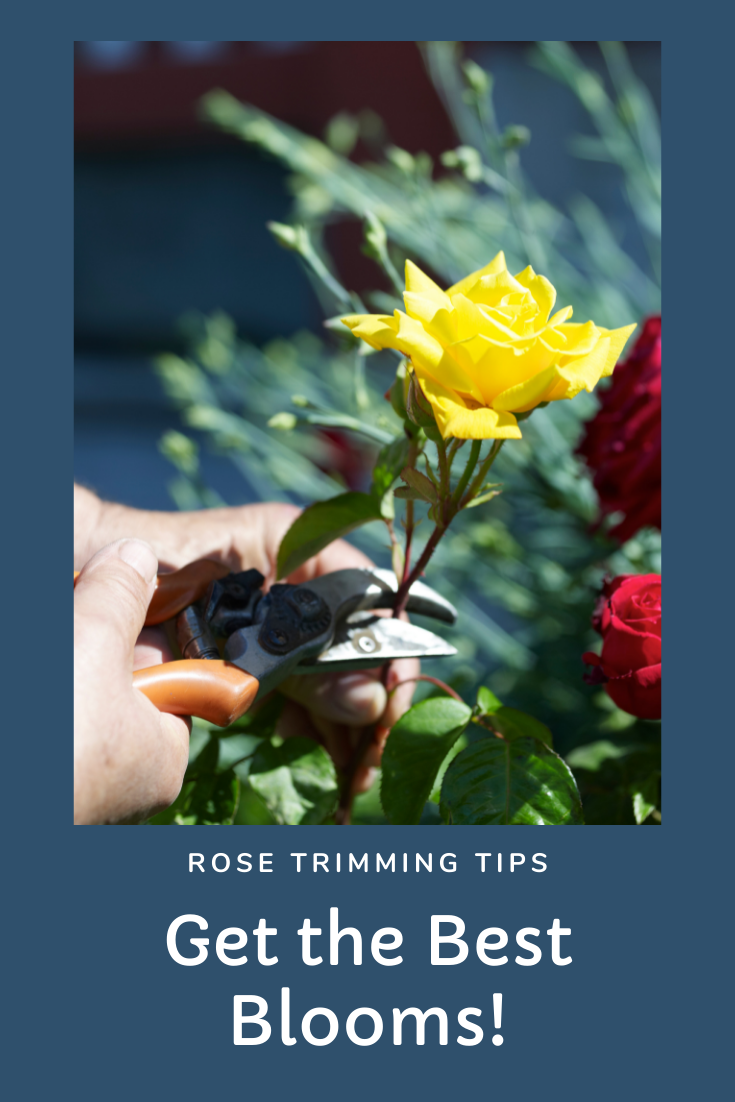Want abundant blooms on your roses this year? Here are some tips on trimming roses to get the best blooms this summer and for years to come.
Tips On Trimming Roses
Pruning roses will keep your plant healthy. Your plant will thank you with plenty of blooms. Neglecting to prune roses will cause the growth to look stalky instead of full. It leaves the plant vulnerable to disease and pest infestations and increases the chance of the plant falling over during poor weather conditions.

What to use to Prune Roses
Your rose grooming kit should contain thick, thorn-proof gloves, preferably ones that reach your elbows. A thick jacket to protect your arms. Sharp pruning sheers, isopropyl alcohol to sanitize sheers, a large bin to catch all the pruned branches, and large tongs. (Keep reading to learn why you need tongs)
When To Prune Roses
The best time to prune roses is in early spring, when there is minimal chance of a deep freeze. Pruning too soon can expose the plant to frost damage. The ideal time is after the last chance of frost has passed. The benefits of pruning roses are multifold. Pruning in the spring allows us to remove any winter damage, clean up the plant, manicure it to the desired shape, and encourage blooms.
How Much To Prune Roses
Roses enjoy breathing space and appreciate the room for air to flow through the center of the plant. Depending on the type of rose you are pruning, you can cut it back between a third to halfway down from the top. Use a pair of sharp sheers and sanitize your tools after pruning each rose.
What Parts To Prune
Start by cutting the branches to your desired height, then clean out any dead growth that looks dark, damaged, or hollow. Now you can thin the plant out by removing stalks that are skinnier than a pencil. After eliminating the week growth, you can start reducing the density of growth from the shrub’s center.
Once you have finished pruning, use your tongs to remove fallen foliage from the plant’s center and base. This will reduce the chances of the rose developing fungus, black spot, and other diseases and remove any overwintering insects and pests.
Grow Tip: This is a great time to fertilize roses. Use a 4-3-2 fertilizer and sprinkle around the dripline. Spring is an excellent time to fertilize as the plant needs nutrients to push our fresh growth, and the rain will help the fertilizer penetrate to the roots of the plant.
Pruning Climbing Roses
For climbing roses, you want to have access to wire tie; we save up twisty-tye bands from bread, but you could go fancy and buy the gardening tye from the dollar tree or your local garden center.
Start by pruning any branches that are jutting beyond two feet in width from the trellis. Trim off any dead foliage and canes and remove any growth that looks frail. Start tying your stems back to the supporting structure and finish off by pruning to your desired shape.
Pruning Tree Roses
Ideally, you will have taken off a fair share of the topiary to lighten the burden for your rose in the fall; if you haven’t, worry not, we are here to help.
Start by pruning your rose to a lollypop shape. Ideally, you want stems going round in a globe shape rather than straight up.
Take off any dead leaves and spindly stems, cut off lateral or crossing growth to encourage airflow, and you are all set for a beautifully manicured rose topiary.
What kinds of roses are you growing in your garden this year? Do you have any tips on pruning roses to share with us? Let us know in the comments below.
By Sargam Merchant
For Home and Travel Cafe By Linette.

 Follow
Follow